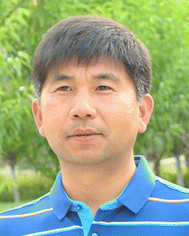Themed issue on porous carbon materials
An-Hui Lua and Sheng Daib
aState Key Laboratory of Fine Chemicals, School of Chemical Engineering, Dalian University of Technology, LingGong Road 2#, Dalian 116024, P. R. China. E-mail: anhuilu@dlut.edu.cn
bOak Ridge National Laboratory, M. S. 6201, Oak Ridge, TN 37831, USA. E-mail: dais@ornl.gov
From years past, when the fabrication of porous carbons was more like “synthesis in a black box”, to nowadays, when we have the capability for the controllable fabrication of porous carbons with specific surface functional groups and compositions, tunable surface areas and pore sizes, and defined nanostructures and morphologies, the rapidly growing field of electrochemical energy storage has demonstrated porous carbons to be vital components of modern technologies. The reason is that the continuous development and improvement of portable electronic devices and transportation vehicles increasingly demands not only lightweight, flexible components, but also greater power and energy density in batteries and supercapacitors. Given the almost infinite number of approaches available for preparing porous carbons and their composites, these materials are sure to continue to impact our world for the next several decades. Furthermore, the high surface areas and excellent thermal and chemical stability of porous carbons make them attractive catalyst supports for a multitude of reactions. Most recently, however, a number of methods of modifying the surfaces and frameworks of carbon allotropes have upgraded their status from simply “heterogeneous catalyst supports” to “metal-free catalysts”. Finally, the flexibility enabled by our capability to tailor the adsorption properties and surface hydrophobicity of porous carbons allows the use of these versatile sorbents, not only for liquid and gas separations, but also as hydrogen storage materials. This creates new possibilities for the development of clean energy and environmental technologies.
In light of the rapid development of porous carbon materials in recent years, our aim is to highlight the remarkable contributions made by leading scientists in this important research area, and the broad impact of porous carbon materials on energy and environmental research. This themed issue on porous carbon materials of Journal of Materials Chemistry A covers all aspects of the recent exciting progress in porous carbon materials, including the synthesis, functionalization, nanostructure, characterization, and application of porous carbons. We thank all the authors for their excellent contributions and sincerely hope that the science and technology community will enjoy reading the exciting topics covered in this issue.
Sheng Dai
| This journal is © The Royal Society of Chemistry 2013 |


